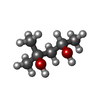+Search query
-Structure paper
| Title | Extracellular modulation of TREK-2 activity with nanobodies provides insight into the mechanisms of K2P channel regulation. |
|---|---|
| Journal, issue, pages | Nat Commun, Vol. 15, Issue 1, Page 4173, Year 2024 |
| Publish date | May 16, 2024 |
 Authors Authors | Karin E J Rödström / Alexander Cloake / Janina Sörmann / Agnese Baronina / Kathryn H M Smith / Ashley C W Pike / Jackie Ang / Peter Proks / Marcus Schewe / Ingelise Holland-Kaye / Simon R Bushell / Jenna Elliott / Els Pardon / Thomas Baukrowitz / Raymond J Owens / Simon Newstead / Jan Steyaert / Elisabeth P Carpenter / Stephen J Tucker /    |
| PubMed Abstract | Potassium channels of the Two-Pore Domain (K2P) subfamily, KCNK1-KCNK18, play crucial roles in controlling the electrical activity of many different cell types and represent attractive therapeutic ...Potassium channels of the Two-Pore Domain (K2P) subfamily, KCNK1-KCNK18, play crucial roles in controlling the electrical activity of many different cell types and represent attractive therapeutic targets. However, the identification of highly selective small molecule drugs against these channels has been challenging due to the high degree of structural and functional conservation that exists not only between K2P channels, but across the whole K channel superfamily. To address the issue of selectivity, here we generate camelid antibody fragments (nanobodies) against the TREK-2 (KCNK10) K2P K channel and identify selective binders including several that directly modulate channel activity. X-ray crystallography and CryoEM data of these nanobodies in complex with TREK-2 also reveal insights into their mechanisms of activation and inhibition via binding to the extracellular loops and Cap domain, as well as their suitability for immunodetection. These structures facilitate design of a biparatropic inhibitory nanobody with markedly improved sensitivity. Together, these results provide important insights into TREK channel gating and provide an alternative, more selective approach to modulation of K2P channel activity via their extracellular domains. |
 External links External links |  Nat Commun / Nat Commun /  PubMed:38755204 / PubMed:38755204 /  PubMed Central PubMed Central |
| Methods | EM (single particle) / X-ray diffraction |
| Resolution | 2.4 - 7.37 Å |
| Structure data |  EMDB-19066: TREK2 in OGNG/CHS detergent micelle with biparatopic inhibitory nanobody Nb6158  PDB-8qz1:  PDB-8qz2:  PDB-8qz3:  PDB-8qz4: |
| Chemicals |  ChemComp-K:  ChemComp-MPD:  ChemComp-HOH:  ChemComp-BA:  ChemComp-Y01: |
| Source |
|
 Keywords Keywords | MEMBRANE PROTEIN / Potassium ion channel / Nanobody / Structural Genomics / Structural Genomics Consortium / SGC |
 Movie
Movie Controller
Controller Structure viewers
Structure viewers About Yorodumi Papers
About Yorodumi Papers



 homo sapiens (human)
homo sapiens (human)
